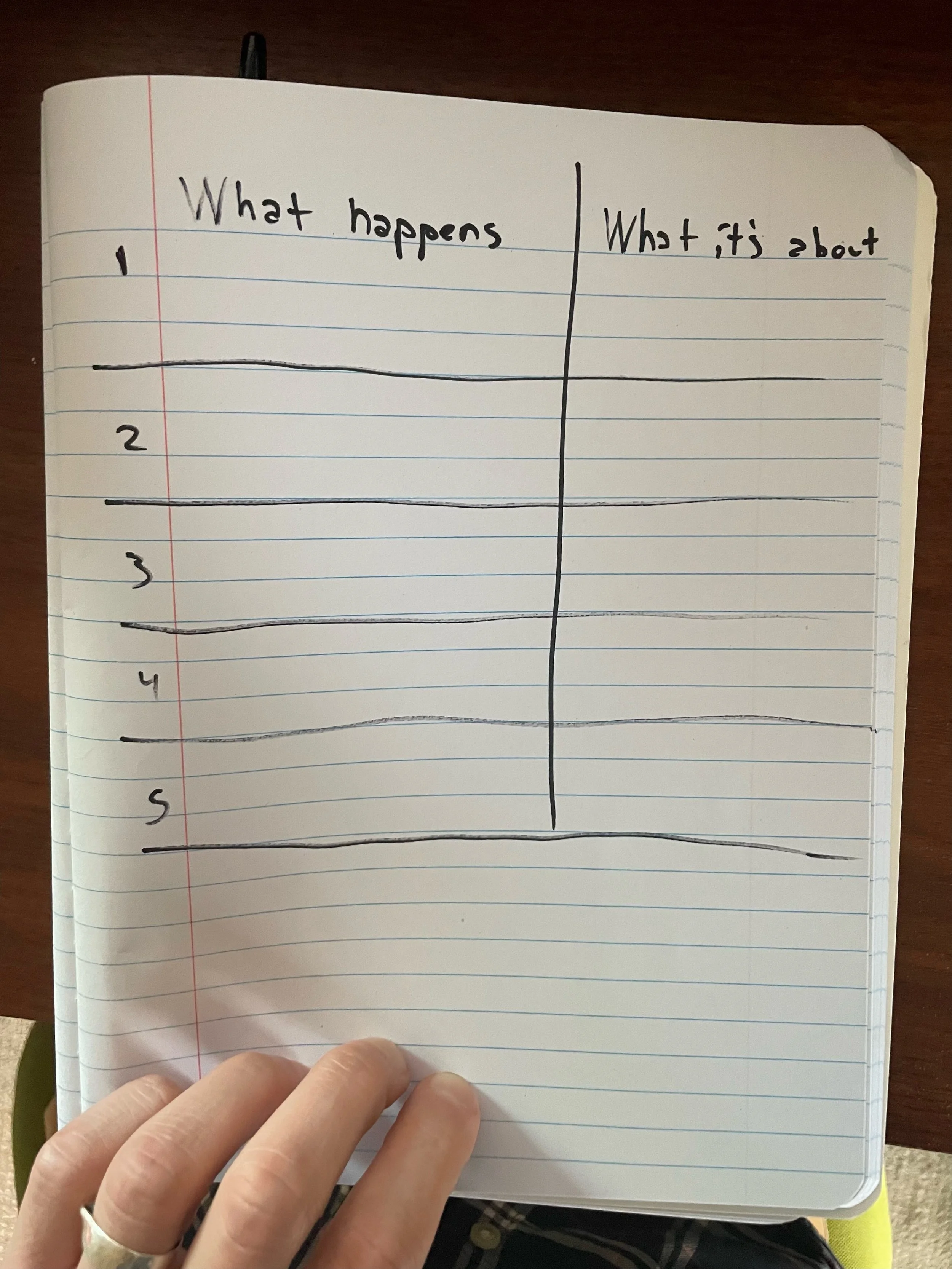College Essay Lab | Lesson 3 | How to outline your college essay
Just in case you’re reading my lessons out of order, I want to be crystal clear about something: I strongly encourage writers to create outlines after they’ve explored their idea by writing a “spit draft”, which I talked about in Lesson 2. The instructions below assume that you’ve created raw material for your essay.
How should you outline your college essay?
Outlining can be useful. It’s also possible to outline too much and too early. Sometimes writers plan their story, endlessly, in order to avoid writing it.
You also might hate outlining, or hate using them. They can feel constraining.
Whatever your relationship is to outlining, your “mileage may vary” when it comes to methods for developing a structure for writing something like a college essay. You know yourself best.
The method I suggest for outlining your essay is a good way to organize your thinking and keep your work focused in a way that shouldn’t feel too restrictive.
TASK: Grab your notebook and pen and then watch this video, where I walk you through an outlining method that has proven useful for most of the 100+ students I’ve helped as they crafted their college essay.
Key points
The what happens column should include plain descriptions of the images, moments, and events.
The what it’s about column should include the point being made in each section of the essay. The takeaway, the argument, the subtext.
I recommend 4-6 rows. A single story concept well-executed at ~600 words is usually at a good pace when there are around 5 “scenes”.
Start where you can. Put in anything that feels clear already. You probably either have a strong grasp of the beginning or the ending, but it’s unlikely you know both. You also probably feel slightly more comfortable in one column versus the other.
Then fill in the gaps. Holes in an outline are much easier to fill than holes in an essay—or a blank outline. Maybe you know what happens in beats 2 and 4—which gives you enough information to identify what happens in beat 3. Sometimes you know what [the ending]’s about, which helps you pick the right anecdote to fill in the what happens box next to it.
HOMEWORK: Keep filling it in until you’ve created a complete outline.
Use this outline as a loose scaffolding for the next draft of your essay, which you’re ready to write! It’s okay to stray from the plan a little bit, but try not to make new decisions about structuring your essay yet–you can always make changes later. Give this structure a chance to be the direction you choose for your essay.
Once you have a full draft, you’ll be ready for the next lesson: editing. Click here when you’re ready.
FEELING STUCK? Schedule a drop-in appointment with me here. Make sure to indicate that you’re working on Lesson 3, and send me your spit draft.


